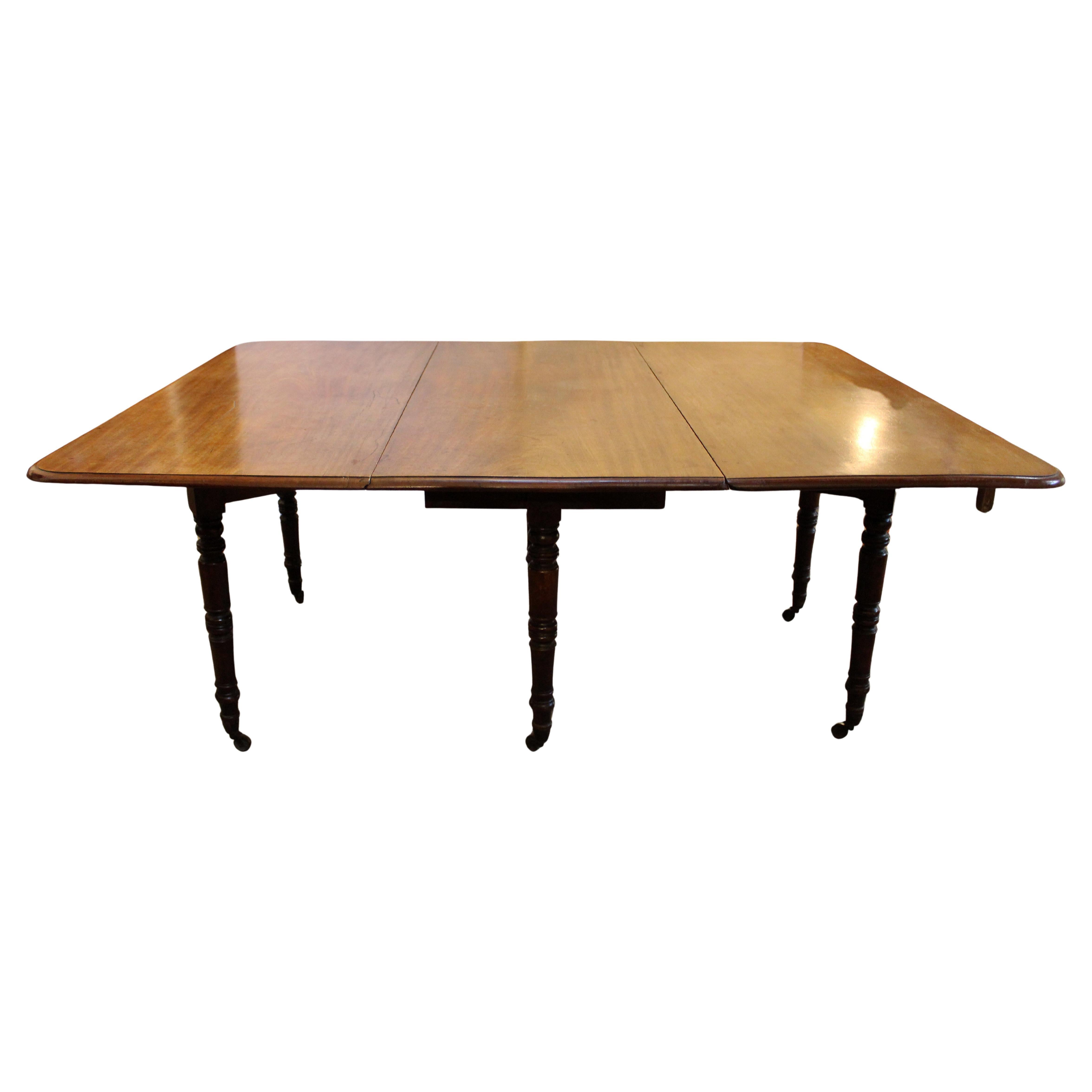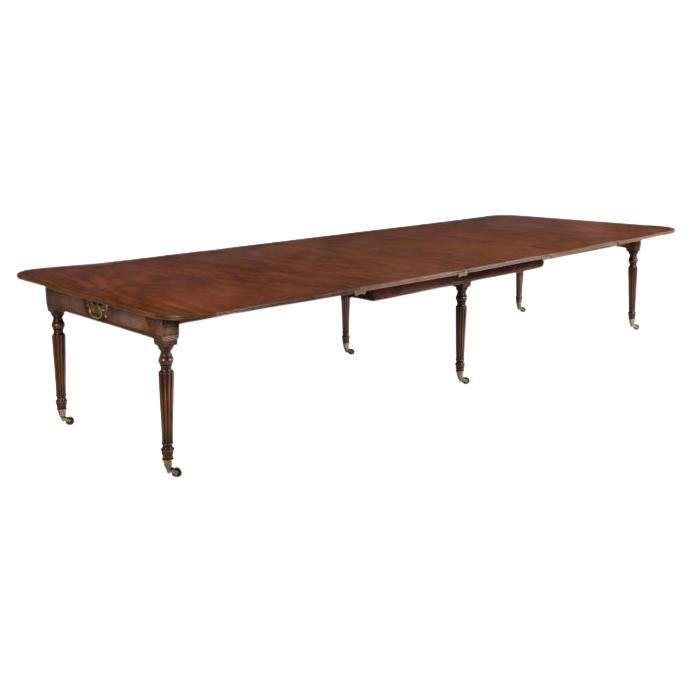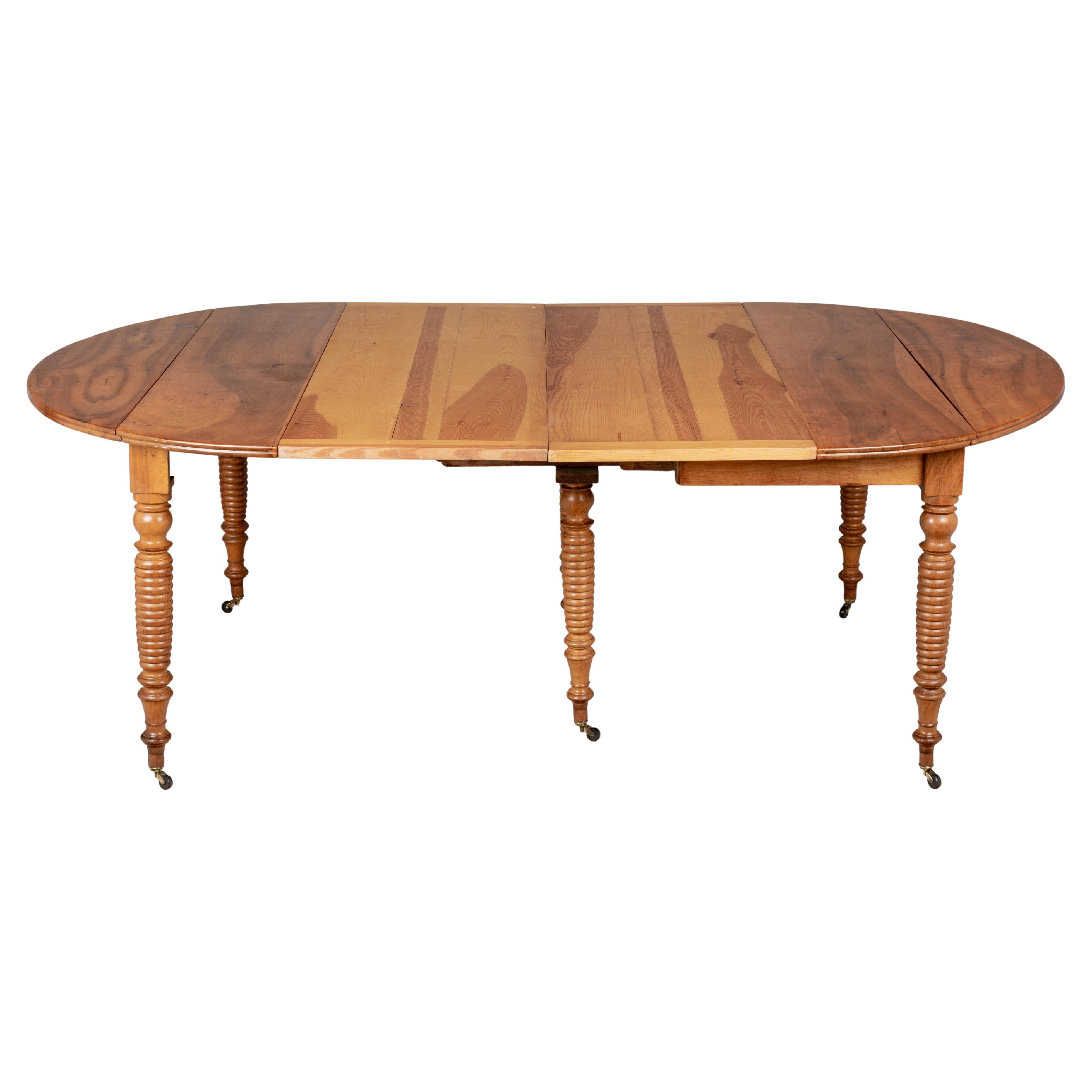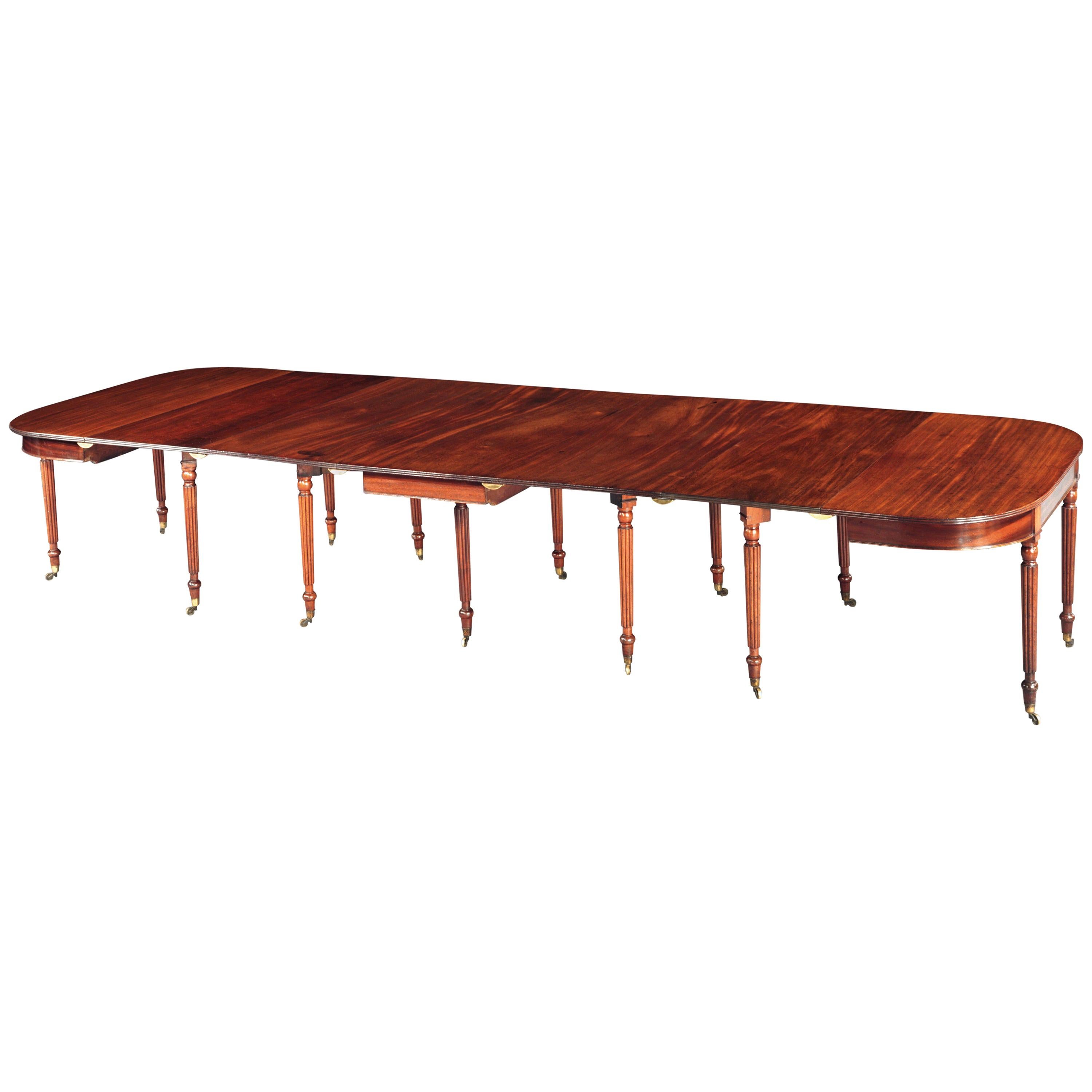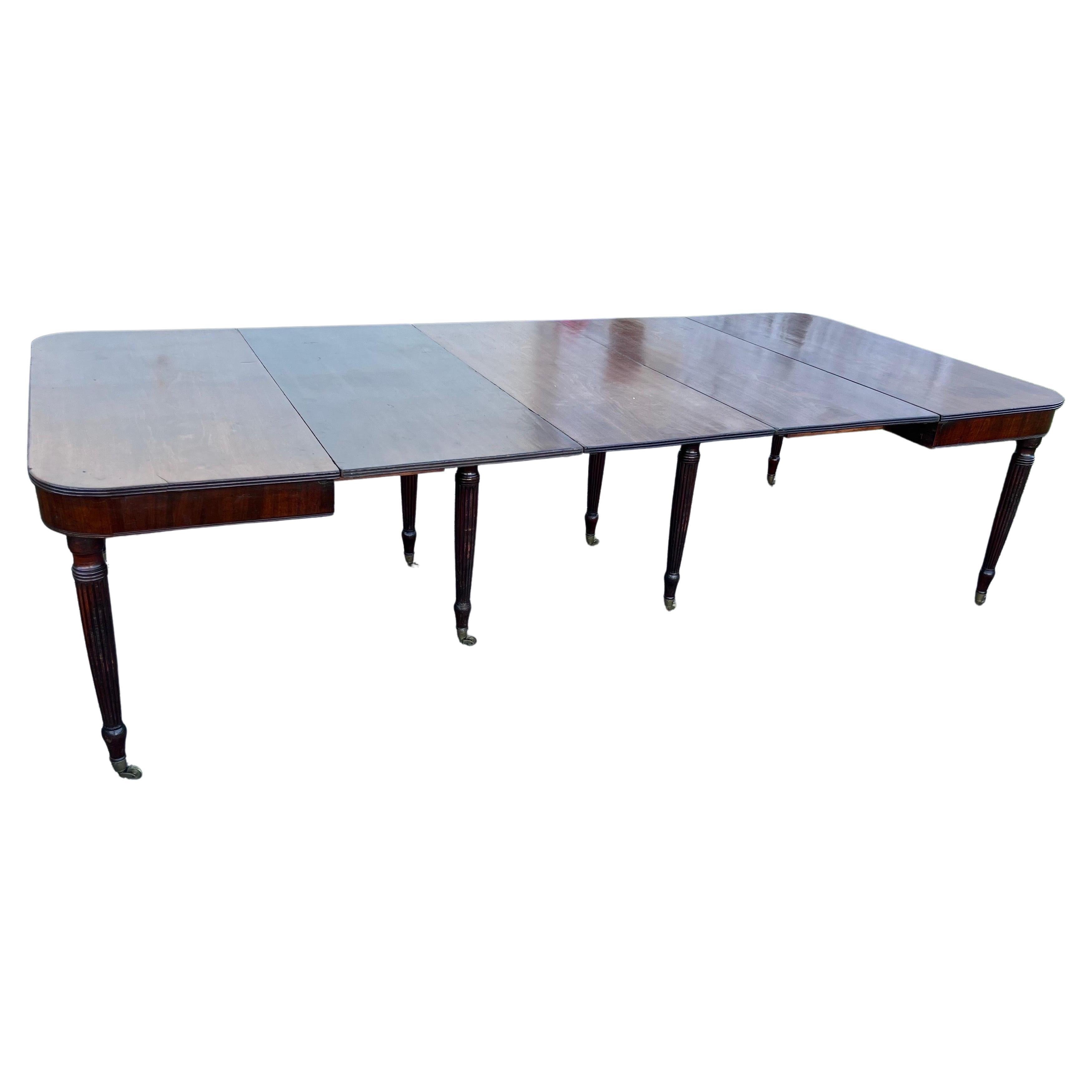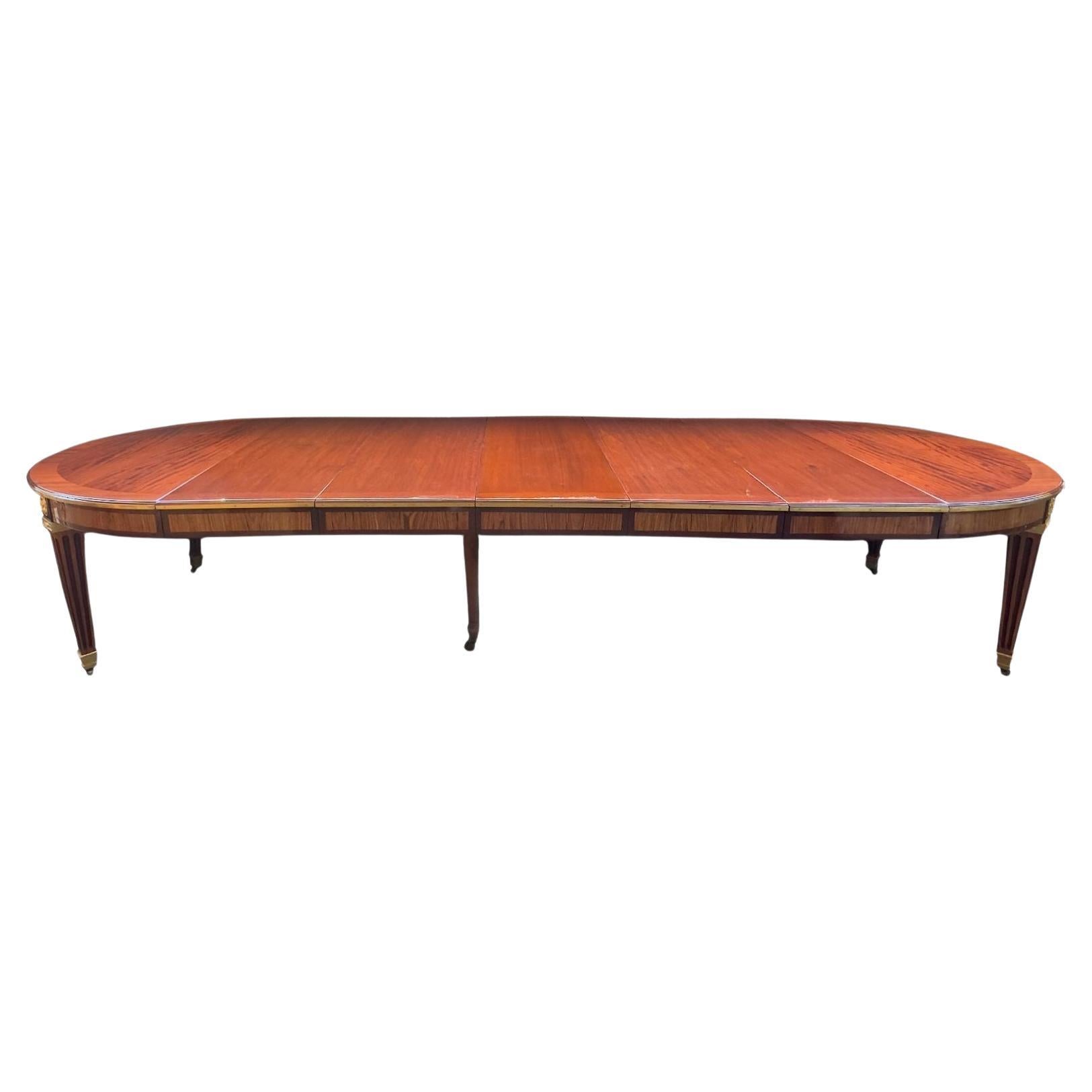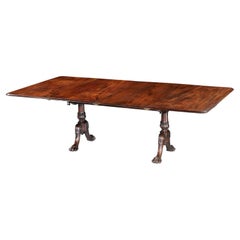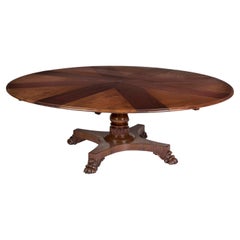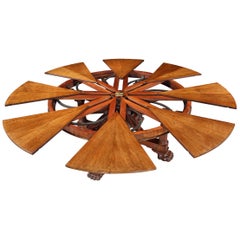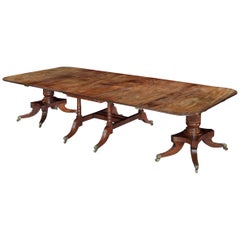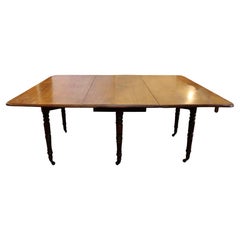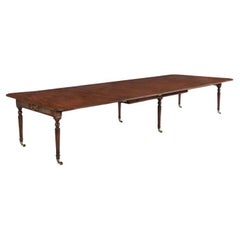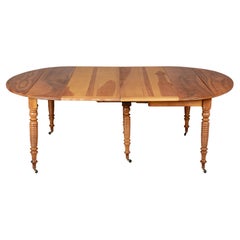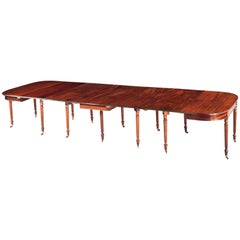Items Similar to Rare & Large 19th Century English Extending Dining Table by Jackson & Graham
Want more images or videos?
Request additional images or videos from the seller
1 of 13
Rare & Large 19th Century English Extending Dining Table by Jackson & Graham
$170,706.50
£125,000
€145,507.66
CA$235,179.44
A$256,304.20
CHF 135,724.13
MX$3,078,483.41
NOK 1,718,297.46
SEK 1,579,805.50
DKK 1,086,780.89
About the Item
An Extraordinary Extending Dining Table
Attributed to Jackson & Graham
The circular top, which can be extended to accommodate from 8 to 22 guests by the addition of 5 leaves, all of oak, features a moulded ebonised edge and inlaid banded borders of harewood, satiné crossbanding and boxwood stringing. Supported on six octagonal tapered legs, each inlaid with intricate anthemiae, foliate banding, and geometric flowers in conforming choice specimen woods. The legs having brass castors stamped ‘Cope/ Collinson/ Patent,’ while the table clamps bear the mark ‘Cope Collinson/ Jan 2 1840.’ A brass inventory plaque ‘526’ to the underside.
English, circa 1870
Dimensions: H: 29 in / 73 cm W: 72 in / 182 cm D: 210.5 in / 534 cm
Provenance:
Likely commissioned for the Dining Room at The Towers, Didsbury, by Daniel Adamson;
By descent, remaining at The Towers when it was sold in 1920 to the
British Cotton Industry Research Association, later known as the Shirley Institute
Private Collection, UK, 1960s
Thence by family descent
Jackson & Graham
Crafted from a carefully curated selection of hardwoods, chosen for their contrasting colours and grains, and accented with ebonised moulding, the table's design is a testament to the influence of Owen Jones. Jones' seminal work, ‘The Grammar of Ornament,’ published in 1856, served as a guiding light for the decorative arts of the period. The close collaboration between Jones and Jackson & Graham is evident in the innovative designs and meticulous attention to detail found in this table.
The firm of Jackson & Graham established in 1836 by Thomas Jackson and Peter Graham at 37 Oxford Street London, and for the next fifty years produced predominately high quality furniture and represented Britain at many of the international exhibitions. Their clients included Queen Victoria, Napoleon III, the Grand Khedive at Cairo and the King of Siam. They were particularly noted for their fine marquetry work, the use of Wedgwood plaques, ivory inlay, rare woods, and fine casting of bronze mounts. They engaged the leading designers of the period, inter alia, Owen Jones, Bruce Talbert, Alfred Lorimer and Eugene Prignot. In the mid 1850’s the workforce was recorded as 250, and by 1875, the company was employing 600 workers.
They were feted exhibitors at many of the Great Exhibitions of the Nineteenth century, and frequent prize winners. At the Paris International Exhibition of 1878, the furniture jury noted of them ‘ the workmanship is so perfect that even with the aid of a magnifying glass scarcely the slightest imperfection is to be found’. In 1885 the company was absorbed by Collinson and Lock, who continued their standard of excellence.
The Towers, Didsbury
The Towers, Didsbury, is a grand mansion designed by Thomas Worthington in the German Gothic style, near Manchester. Shortly after its completion, it was bought by Daniel Adamson, the engineer who proposed the building of the Manchester Ship Canal. As noted in the ‘Building News’ of 1873, the dining room measured an ideal 30x20 feet, and could accommodate the table comfortably and its ±22 guests. In 1920, the house was sold to the British Cotton Industry Research Association, later known as the Shirley Institute.
It was in the boardroom of the Shirley Institute, formerly the dining room, where this magnificent table was used. In the 1960s, the table was acquired by the father of the former owner, marking a new chapter in its storied history. The table's impressive size, extending to nearly five and a half metres, suggests that it likely remained with the house when it was sold in 1920.
- Attributed to:Jackson & Graham (Cabinetmaker)
- Dimensions:Height: 29 in (73.66 cm)Width: 210.5 in (534.67 cm)Depth: 71.5 in (181.61 cm)
- Materials and Techniques:
- Place of Origin:
- Period:
- Date of Manufacture:circa 1870
- Condition:Wear consistent with age and use.
- Seller Location:London, GB
- Reference Number:Seller: 102261stDibs: LU954744190392
About the Seller
5.0
Recognized Seller
These prestigious sellers are industry leaders and represent the highest echelon for item quality and design.
Established in 1964
1stDibs seller since 2012
54 sales on 1stDibs
Typical response time: <1 hour
Associations
The British Antique Dealers' AssociationLAPADA - The Association of Arts & Antiques Dealers
- ShippingRetrieving quote...Shipping from: London, United Kingdom
- Return Policy
More From This Seller
View AllRare 19th Century English Mahogany Extending Dining Table by Wilkinson & Sons
By Thomas Wilkinson & Sons
Located in London, GB
A rare patent extending dining table constructed from fine Cuban mahogany, when closed the table serves as an end-support table showcasing the handsome lotus-leaf carved and tapering...
Category
Antique 19th Century English Dining Room Tables
Materials
Mahogany
Rare & Early Jupe Expanding Dining Table by Johnstone & Jeanes
By Johnstone, Jeanes & Co.
Located in London, GB
A Rare 'Jupe's' Extensible Mechanical Action Circular Dining Table
By Johnstone & Jeanes of New Bond Street
Together with its original Leaf Cabinet
By Johnstone & Jeanes
Constructe...
Category
Antique 19th Century English Dining Room Tables
Materials
Mahogany
Very Rare 19th Century Extending Jupe Table by Maple & Co
By Robert Jupe, Maple & Co.
Located in London, GB
A very rare ‘Jupe’s’ extensible mechanical action circular dining table
By Maple & Co
Constructed in mahogany, rising from four ‘lions paw’ feet, which support four reeded and st...
Category
Antique 19th Century English Dining Room Tables
Materials
Mahogany
Mahogany Extending Dining Table of the Late Georgian Period
Located in London, GB
A good extending dining table of the late Georgian Period
Constructed in a finely patinated and figured mahogany, the outer supports having reeded swept legs with ogee toes with l...
Category
Antique Early 19th Century English Georgian Dining Room Tables
Materials
Brass
An Early 19th Century George III Period Mahogany Table on Brass Castors
Located in London, GB
George III rectangular Breakfast table.
The well figured Cuban mahogany top with a reeded moulded edge and having an unusual vertical ree...
Category
Antique 19th Century English George III Tables
Materials
Brass
Antique End Support Table Attributed to Gillows of Lancaster
By Gillows of Lancaster & London
Located in London, GB
A fine end support table firmly attributed to Gillows of Lancaster.
Constructed in a well figured Goncalo Alves, rising from winged lions claw feet supporting the base platforms; ...
Category
Antique Early 19th Century British George IV End Tables
Materials
Wood
You May Also Like
Early 19th Century English Double Gated Drop Side Dining Table
Located in Chapel Hill, NC
Early 19th century mahogany double dated drop side dining table, English. George III period. Grandly proportioned - a wonderful design to maximize seating and minimize cumbersome leg...
Category
Antique Early 19th Century English George III Dining Room Tables
Materials
Wood
A Regency extending dining table by Morgan & Sanders, suppliers to Lord Nelson
Located in Lymington, Hampshire
This large mahogany imperial action dining table has rounded ends each housing the telescopic action that extends the table to varying lengths, three extra leaves and eight brass clips. It is supported on six turned tapering and reeded legs with brass caps and castors, each end with large brass handle engraved ‘Patent Morgan & Sanders Inventors & Manufacturers, 16 & 17 Catherine Street Strand London‘. English, circa 1815.
Height: 28¾ in (73 cm) Length closed: 74in (188 cm) Extended 13ft 4in (406 cm)
Width: 59½ in (151 cm)
Literature: Nicholas A. Brawer, British Campaign Furniture – Elegance under Canvas, 1740-1914, New York, 2001, pp.192-193, pls.D50-D52 for a very similar dining table.
Morgan & Sanders was established in 1800 by Thomas Morgan & Joseph Sanders, both of whom had worked for the cabinetmaker Thomas Butler at 13–14 Catherine Street, London. Initially, they produced campaign furniture, that is, furniture which could be easily knocked down and packed fairly flat, for the use of officers in military service. The Napoleonic War required an ever-expanding British Army and Navy, thus also increasing the demand for all types of campaign furniture, from collapsible beds...
Category
Antique 1810s English Regency Dining Room Tables
Materials
Mahogany
19th Century French Louis Philippe Extension Dining Table
Located in Winter Park, FL
A 19th century French Country Louis Philippe style drop-leaf dining table. Made of walnut with six turned legs on new brass castors. Legs have been lengthened so the table is a good ...
Category
Antique 19th Century French Louis Philippe Dining Room Tables
Materials
Walnut
Fine Regency Period Mahogany Extending Dining Table
Located in London, GB
A good quality early 19th century Regency period golden mahogany reeded edged dining table having drop flap gate-leg actions to centre and ends, fitted with four removable leaves, su...
Category
Antique Early 19th Century English Regency Dining Room Tables
Materials
Mahogany
Fine early 19th Century Patented Imperial Dining Table by Gillows
By Gillows of Lancaster & London
Located in Richmond, VA
Fine early 19th century patented "Imperial" dining table by Gillows of Lancaster. This table is very similar to the one made in 1813 for Broughton Hall. See page 243 in volume 2 of "...
Category
Antique Early 19th Century English Regency Dining Room Tables
Materials
Mahogany
Exceptional Large French 19th C. Louis XVI style Dining Table with Gilt Bronze
Located in Los Angeles, CA
Stunning French 19th-century Louis XVI style dining table. Recently REFINISHED and Elegantly designed with gilt bronze mounts, this impressive piece features five extensions, allowin...
Category
Antique 19th Century French Louis XVI Dining Room Tables
Materials
Bronze
More Ways To Browse
Wedgwood Used
Antique Octagon Table With 8 Legs
Ivory Plaque
Knoll Propeller
Lauren Nelson Design
Louis Xv Dining Table Seats 10
Mangiarotti Asolo
Maple Parsons Table
Mastercraft Brass Racetrack Dining Table
Monastery French Walnut Table
Oak Claw Foot Round Tables
Oak Claw Foot Table
Oak Racetrack Table
Octagonal Table Extendable
Old Hickory Drop Leaf Table
Omann Jun Dining Table Teak
Optical Illusion Table
Osvaldo Borsani T41
